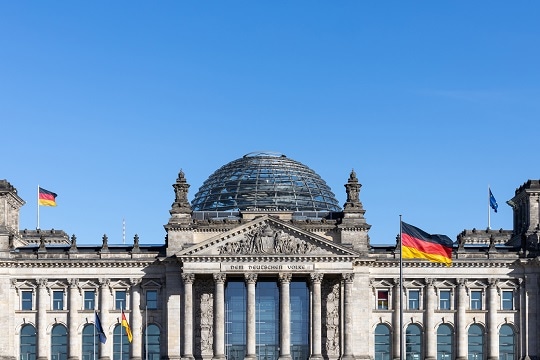- Less exposure to growth industries: Germany still relies on “old” industries such as auto manufacturing and it’s underinvesting in technology-related growth industries that are less susceptible to trade tensions.
- High energy prices: Energy prices have fallen sharply since the 2022 peak but remain around 80% higher than before the energy crisis, compared with around 25% in the US and 5% in China. Germany’s decarbonization commitments compound the issue, as carbon prices are required to rise notably in coming years to reduce emissions.
- Too much red tape: The economy suffers from excess regulations and inefficient public administration relative to other advanced economies.
- Skilled labor shortages: The supply of labor is under pressure from falling educational achievements and skills mismatches, with a particular lack of workers in technology sectors.
How can Germany improve its economic potential?
There are several critical areas where policymakers have opportunities to improve Germany’s growth potential on a sustainable basis, according to Goldman Sachs Research. “Investors are now focused on whether the Merz government can build on the improved cyclical outlook by addressing the structural challenges and raise growth sustainably,” Garnadt and Stehn write.
Net migration by EU nationals, which had contributed significantly to labor supply growth over the past 15 years, turned negative in 2024 and is unlikely to support the labor pool going forward. One possible solution is to expand a program for incentivizing immigration from the Western Balkans to other countries such as Turkey and Egypt. “Targeted labour immigration is crucial to limit Germany’s labour supply shortage,” Garnadt and Stehn write.
Initiatives to reduce red tape and improve the efficiency of government services could make the state more business-friendly, supporting start-ups and investment. Simplifying the income tax code, harmonizing rules across states, and centralizing supervisory institutions could reduce regulatory complexity.
While energy price relief is likely as supplies of liquefied natural gas rise sharply, keeping electricity prices in check sustainably would likely require curbing non-energy costs, which make up a large share of electricity prices in Germany. The government could reduce network charges by incentivizing localized electricity supply and demand, such as by dividing the single German bidding zone and encouraging regional price differentiation. Other incentives are needed to target the high variability of renewables-based electricity supplies by flexing demand, such as through smart meter rollouts, dynamic network charging, and the build-out of flexible generation capacity.
In addition, there’s scope for policymakers to introduce initiatives to diversify trade and reduce dependences on individual markets and reform social security to reduce complexity and support incentives to work. Meanwhile limiting early retirements could relieve some of the pressure on the public pension system, and adopting more digital health technologies and data-driven capacity planning could help make the healthcare system more efficient.
This article is being provided for educational purposes only. The information contained in this article does not constitute a recommendation from any Goldman Sachs entity to the recipient, and Goldman Sachs is not providing any financial, economic, legal, investment, accounting, or tax advice through this article or to its recipient. Neither Goldman Sachs nor any of its affiliates makes any representation or warranty, express or implied, as to the accuracy or completeness of the statements or any information contained in this article and any liability therefore (including in respect of direct, indirect, or consequential loss or damage) is expressly disclaimed.
